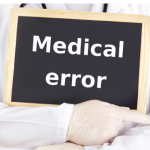In our professional lives, many of our day-to-day diagnoses or therapeutic decisions are instinctual. As our experience as a provider grows, diagnoses are based on the rich tapestry of patients we’ve seen, articles we’ve read, and the stories we’ve heard. Who among us has not made the diagnosis of fibromyalgia in a new patient in the first minute of the history? This diagnosis is made with heuristics. Heuristics are cognitive shortcuts—rules of thumb—that allow rapid decision making without formal analysis.
I’m reminded of the time my partner diagnosed a patient with Ehlers-Danlos syndrome. I asked him how he did it and he said simply, “He looked like the last Ehlers-Danlos patient I saw.” This is also called thin slicing, a process where we take a wide variety of clues and narrow them to the very few factors that matter. Thin slicing and heuristics allow us to move through a busy day of 20 patients and still practice competent medicine. “Hand synovitis plus a high anti-CCP means rheumatoid arthritis,” or, “That looks like a shingles rash to me.” However, the instinctual approach can be flawed and lead to error as it is by nature quick and not inclusive of all the data.
TABLE 1: How Rheumatologists Think
- There is a dual system of diagnostic reasoning.
- Clinicians rely extensively on instincts and heuristics for a speedy diagnosis.
- When uncertainty exists, revisit the problem list and create a complete differential diagnosis.
- Anchoring bias is the most common reasoning error. When new information appears, reconsider the diagnosis. Avoid favoritism to the original diagnosis.
- Analyze your errors. Why did they occur?
System II
The other system of diagnostic reasoning, System II, is the systematic and analytical style that we associate with great diagnosticians.4 This system is knowledge based and allows us to come up with the complete differential diagnosis. The scientific description of this style is “hypothetico-deductive,” and it emanates from the cerebral cortex and the memory area of the brain. It is rational decision making at its best, thorough and detailed. System II is the hallmark of our subspecialty, as in, “Please see this patient in the unit. I can’t figure it out. They must have some kind of vasculitis.” In this context, this type of decision making involves a thorough problem list of all organs affected and a robust differential diagnosis. This style leads to more diagnostic testing but, when uncertainty exists, the analytic approach is the most reliable.



